Filther Build Guide
- filip
- Jul 14, 2021
- 3 min read
Updated: Feb 12, 2024
Filther is a CEM3320-based 4-pole low pass Voltage Controlled Filter, with CV control over resonance,V/Oct Tracking, and 2 resonant distortion modes waiting to be engaged.
This build guide will outline the construction of this filter from the kit.
Schematic and Board View files are available at the bottom of this page.
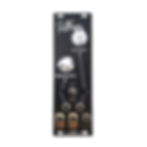
The BOM outlines all parts included in the kit:

Let's start with the resistors. You'll have 4 different resistor values and the tape on which they're mounted is labelled with their value. All components have their Reference labelled on the PCB. We'll start with the 100K Resistors, there's 16 of them. Resistors can go in either way.

Next Solder the 5 1K8 Resistors:
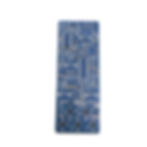
Then the 4 220Ks:

And finally the 6 91Ks:

Hard part is done!
Let's stuff the 5 1N4148 diodes next. Diodes have a direction, so match up the black line on the diode with the line on the diagram. Double check the orientation before soldering.

Next lets solder the blue or yellow 100nF ceramic capacitors, these can go in either way. The footprint for these capacitors are little bubbles not boxes, the boxed capacitor footprints are for the 330pF film types.
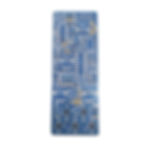
Now is a good time for the ICs - Tl072, TL074, and the AS3320. These all point the same direction - notches point up. Make sure these are in the right orientation before soldering! These chips all have different pin counts, so they can each only fit in one position.

The 3 10uF Electrolytic capacitors are POLARIZED and must go in the right way around. The PCB Footprint shows a + sign, however the caps themselves have a stripe showing the NEGATIVE side. Compare your placement to my photo before soldering these. If these are backwards they can violent explode.
The red box film caps can go in either way.

Let's flip the board over and take care of the power header and V/OCT trim pot:
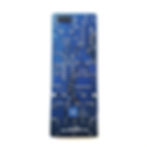
Now is time for jacks. Make sure these are flush with the PCB or the panel won't sit right. A good strategy is to solder just one pin each and then reflow it while pushing the jack down. Once the position is good, solder the other 3 legs.

The 2 metal potentiometers go on top, and the 2 plastic potentiometers go on the bottom. At this point it may be a good idea to test fit the panel before soldering - especially to get the switch straight.

The switch sits a bit lower than the pots, so a washer and lock washer is used to get the height right:
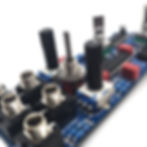
Finally you're ready to fit the panel and test, for now just make sure your filter is *ahem* filtering, and all controls are working correctly. If you're not getting any sound, double check your diode positioning compared to my photos, and check that your ICs are installed the right way around.
Calibration
Calibration can be done using a guitar tuner, a tuner app, or even by ear. There is a single V/OCT adjustment that calibrates the current going into the cut off control.
Disconnect all inputs and turn resonance to maximum
Keep the distortion switch in the middle position - the two CV attenuators can be set to any position.
Sweep the cut off until you hear a self-resonant sine wave.
Feed a keyboard or sequencer into the V/OCT input.
Apply alternating octaves of any note and adjust the V/OCT trimmer until the resulting octave is in tune. If you find that you cannot hear the higher note, turn the CUTOFF knob down until you are in audible range.
Schematic and Board View




